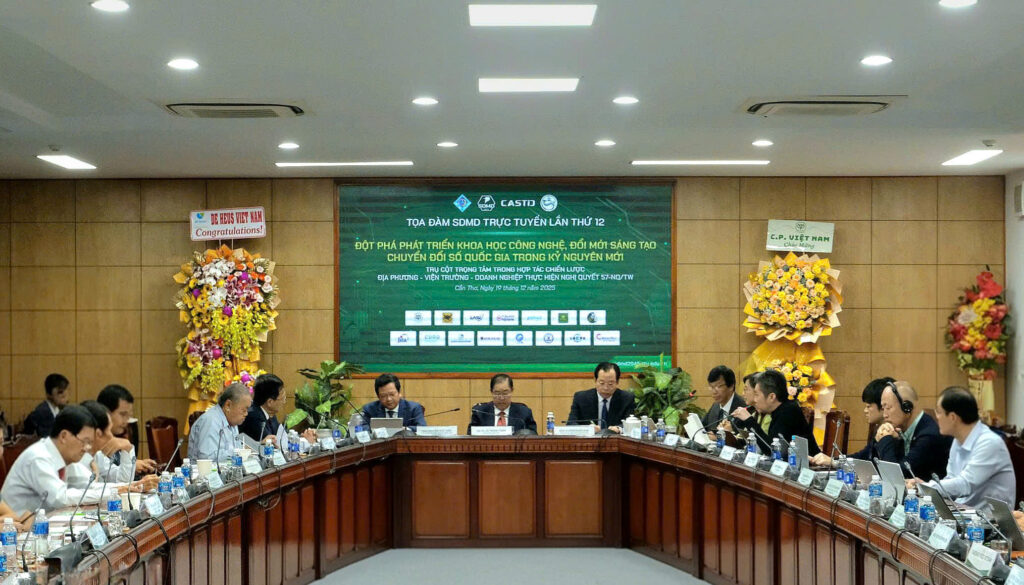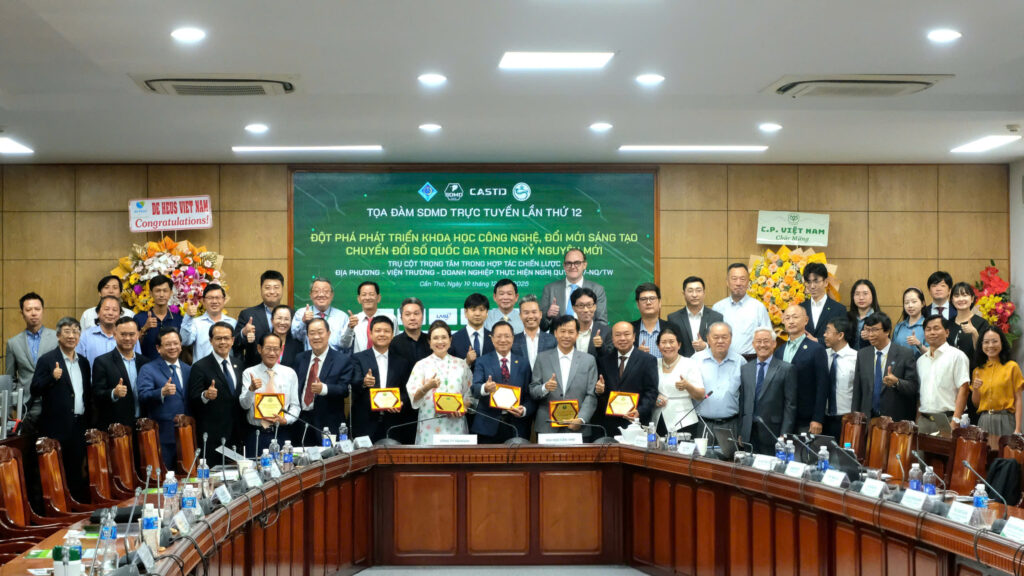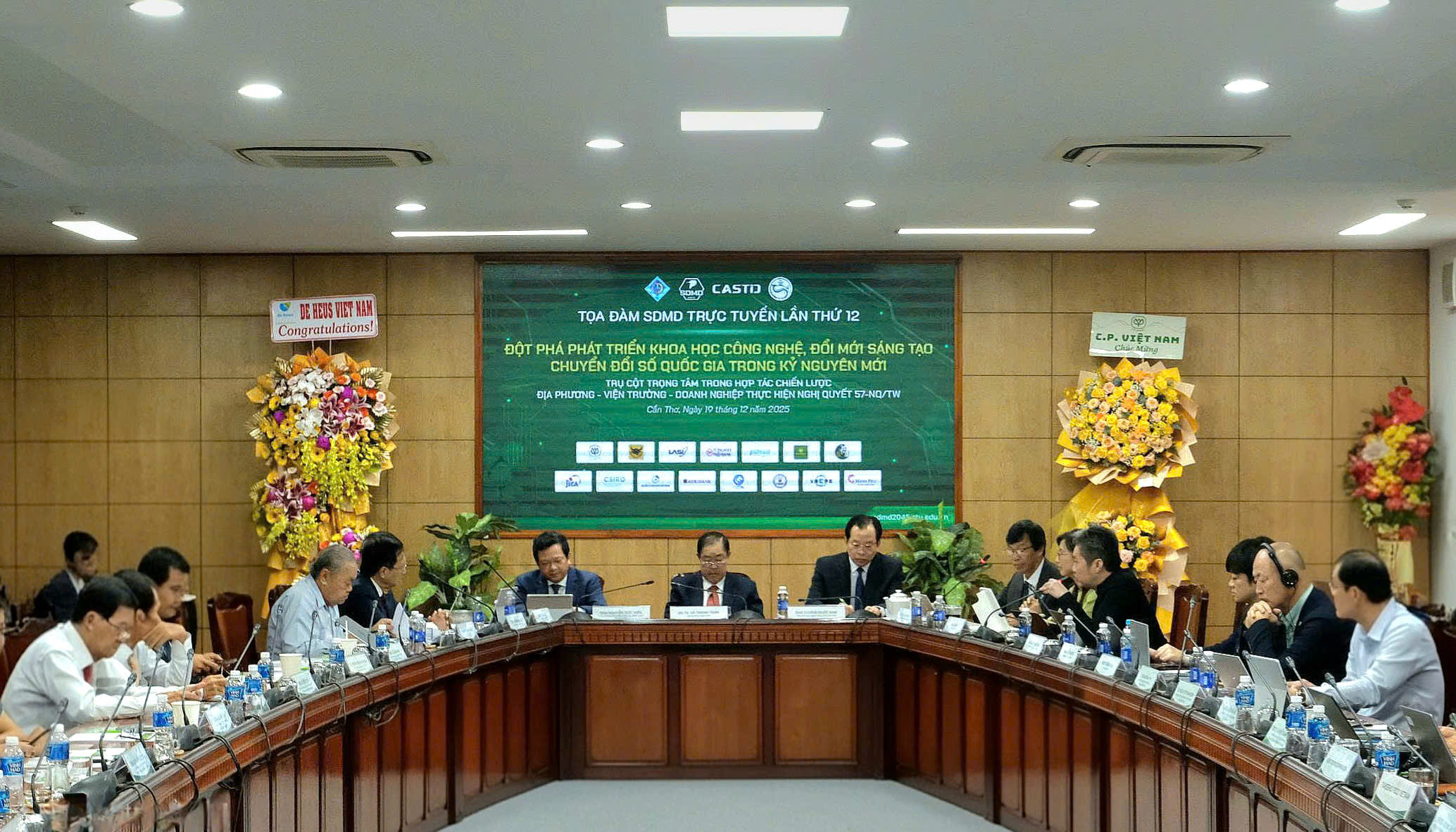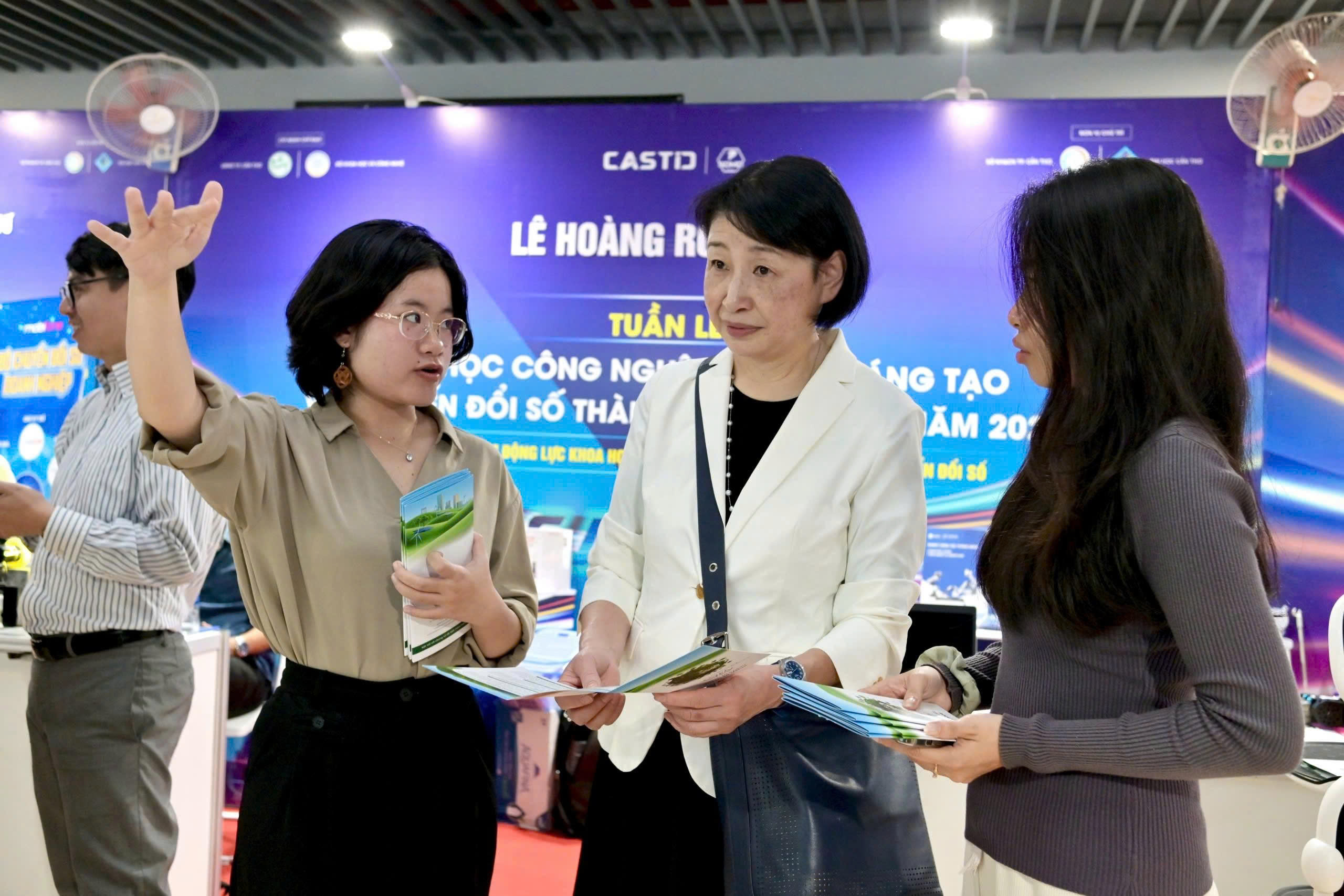Prime Minister Pham Minh Chinh emphasized that ‘the entire nation must act as one army,’ with a spirit of acceleration, breakthrough, and leapfrogging, to catch up, advance together, and move ahead in developing industries, including the goal of being able to design, manufacture, and test certain essential semiconductor chips by no later than 2027.
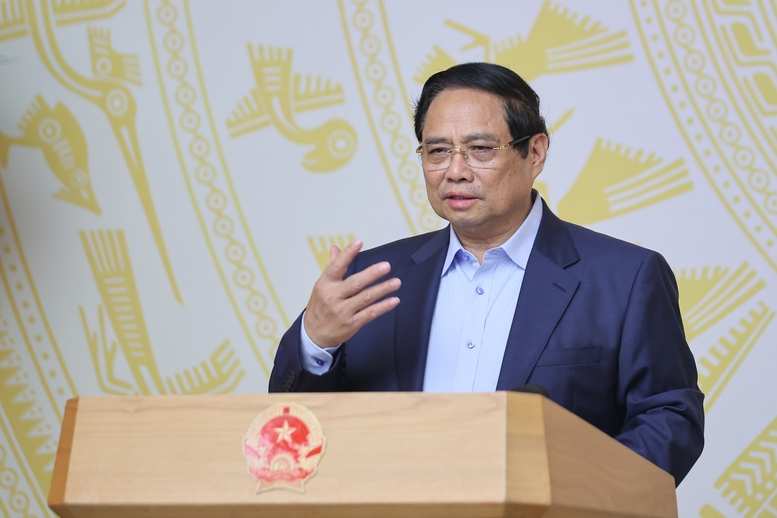
Prime Minister Pham Minh Chinh chaired the second meeting of the National Steering Committee for the Development of the Semiconductor Industry.
On the morning of August 4, Prime Minister Pham Minh Chinh, Head of the National Steering Committee for the Development of the Semiconductor Industry, chaired the Committee’s second meeting to review the implementation of the conclusions from its first session and to set out tasks to promote the development of the semiconductor industry in the coming period.
The meeting was held in person at the Government Headquarters and connected online with several provinces, cities, universities, academies, and high-tech zones. Attending the meeting were Deputy Prime Minister Nguyen Chi Dung, Standing Deputy Head of the Steering Committee; Minister of Science and Technology Nguyen Manh Hung; Minister of Justice Nguyen Hai Ninh; leaders of central ministries and agencies; leaders of several provinces and cities; leaders of universities, academies, high-tech zones, and technology corporations.
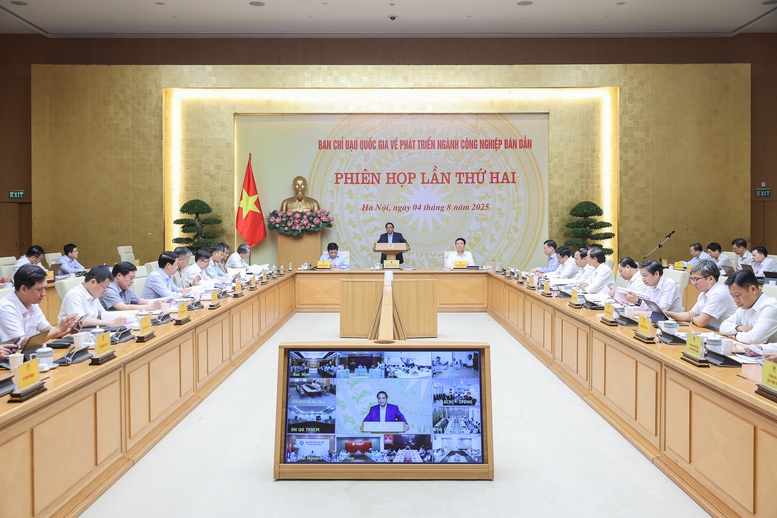
The Prime Minister emphasized that ‘the entire nation must act as one army,’ with a spirit of acceleration, breakthrough, and leapfrogging, to catch up, advance together, and move ahead in developing industries, including the goal of being able to design, manufacture, and test certain essential semiconductor chips by no later than 2027
Reports and opinions presented at the meeting assessed that the Fourth Industrial Revolution is unfolding vigorously, with remarkable breakthroughs in strategic technology sectors, particularly semiconductors and artificial intelligence. The global semiconductor industry is experiencing strong growth and profound restructuring, both in terms of technology and supply chains. However, the industry also faces risks of supply chain disruptions due to geostrategic competition among major powers.
Meanwhile, Vietnam is entering a phase of strategic economic restructuring, shifting from a growth model that relies primarily on low-cost labor, outsourcing, assembly, and resource exploitation to a new growth model driven by science, technology, innovation, and digital transformation as key engines.
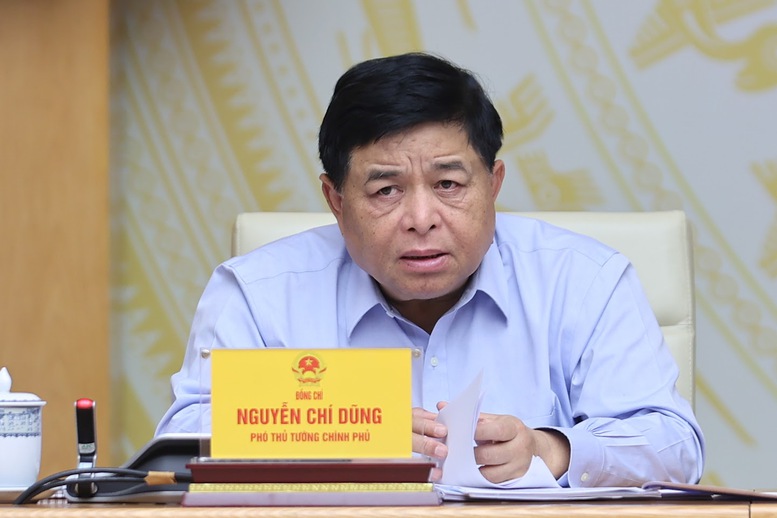
Deputy Prime Minister Nguyen Chi Dung attended the meeting.
In terms of leadership, direction, and administration, the Party and the State have introduced multiple strategic guidelines and policies to facilitate investment and the development of the semiconductor industry, such as: Politburo Resolution No. 52-NQ/TW dated September 27, 2019, on several guidelines and policies to proactively participate in the Fourth Industrial Revolution; Politburo Resolution No. 57-NQ/TW dated December 22, 2024, on breakthroughs in the development of science, technology, innovation, and national digital transformation; and National Assembly Resolution No. 193/2025/QH15 dated February 19, 2025, on piloting special mechanisms and policies to create breakthroughs in the development of science, technology, innovation, and national digital transformation.
The Government and the Prime Minister have issued decisions and directives on the development of the semiconductor industry, such as: Government Resolution No. 71/NQ-CP dated April 1, 2025, on the Government’s Action Program to implement Politburo Resolution No. 57-NQ/TW dated December 22, 2024; Prime Minister’s Decision No. 1017/QD-TTg dated September 21, 2024, approving the Human Resources Development Program for the Semiconductor Industry through 2030 with orientations to 2050; Prime Minister’s Decision No. 1018/QD-TTg dated September 21, 2024, promulgating the Strategy for the Development of Vietnam’s Semiconductor Industry through 2030 with a vision to 2050; and Prime Minister’s Directive No. 43/CT-TTg dated December 4, 2024, on promoting human resource training for the semiconductor industry and several core digital technology sectors.
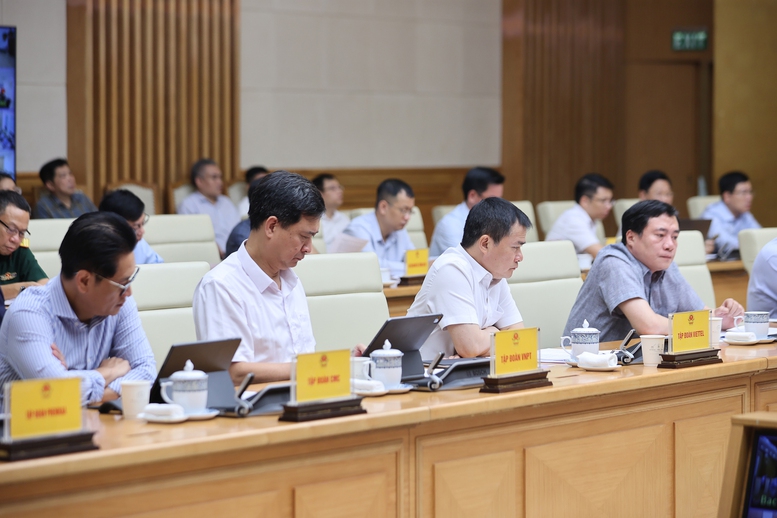
Delegates attending the meeting
Regarding the results achieved, reports and opinions at the meeting assessed that the tasks outlined in the Government’s and the Prime Minister’s Decisions and Conclusions on developing the semiconductor industry have been implemented by ministries, sectors, and localities and completed on schedule.
Up to the present, 10 out of 38 tasks under the Semiconductor Industry Development Strategy have been completed. Nine out of 34 tasks under the Semiconductor Industry Human Resources Development Program have been fulfilled. Additionally, 8 out of 37 tasks assigned to ministries, sectors, and localities have been completed in accordance with the conclusions of the Steering Committee’s first meeting.
The legal framework, mechanisms, and policies for the development of the semiconductor industry have been actively refined to meet development requirements. At the 9th session of the 15th National Assembly, the Government submitted three laws and two related resolutions for the National Assembly’s consideration and approval to promote the growth of the semiconductor industry.
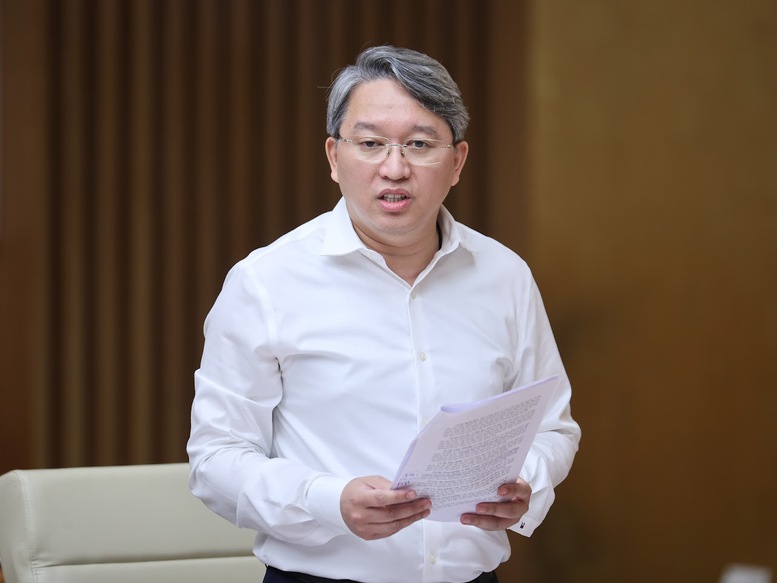
Minister of Justice Nguyen Hai Ninh delivered a report at the meeting
The Government issued Decree No. 182/2024/ND-CP on December 31, 2024, providing regulations on the establishment, management, and use of the Investment Support Fund, which includes preferential policies for high-tech industry enterprises in general and the semiconductor industry in particular.
Human resources are being developed with the goal of ensuring that by 2030, there will be at least 50,000 semiconductor engineers.
Regarding the current workforce in the industry, approximately 7,000 engineers are working at chip design enterprises; around 6,000 engineers and 10,000 technicians are employed at companies involved in chip packaging, testing, and the production of semiconductor materials and equipment. The Semiconductor Industry Innovation Network brings together more than 100 Vietnamese experts from around the world.
In terms of training and human resource development, a standardized curriculum for semiconductor chip training has been issued. A total of 166 higher education institutions now offer semiconductor-related programs; more than 6,300 undergraduate students are enrolled in semiconductor majors, and over 12,000 are studying related disciplines. Nearly 20 educational institutions have adopted the ‘Three-Party’ training model (state – university – enterprise) in semiconductor education.

Deputy Chairman of the Government Office Pham Manh Cuong delivered a report at the meeting
In terms of infrastructure development, CT Group has commenced the expansion of a Vietnamese-owned and operated chip factory, aiming to produce 100 million chips per year by 2027. An R&D ecosystem and internationally standardized cleanroom systems are being built and expanded in major cities, such as SHTP Labs at the Ho Chi Minh City High-Tech Park (with an investment of VND 300 billion) and a laboratory at Vietnam National University, Hanoi (USD 5 million).
In terms of attracting FDI and developing domestic enterprises, Vietnam currently has around 170 FDI projects in the semiconductor and high-tech sectors, with total registered capital of nearly USD 11.6 billion, including large-scale projects such as Intel (USD 4.1 billion), Amkor (USD 1.6 billion), and Hana Micron (USD 673 million).
In the chip design sector, there are nearly 50 foreign corporations (from the U.S., Japan, South Korea, etc.) and more than 10 domestic enterprises (such as Viettel, FPT, and CMC). In the packaging and testing sector, there are 14 foreign companies and 1 domestic company. In the semiconductor supporting industry, there are 15 foreign enterprises.
In terms of international cooperation, Vietnam has been selected as one of around 10 countries and economies to collaborate with the global Semiconductor Association to organize the world’s largest semiconductor event series (SEMICON). Domestic training institutions have proactively expanded cooperation with foreign counterparts to enhance research and training effectiveness, and to promote exchange and learning opportunities.
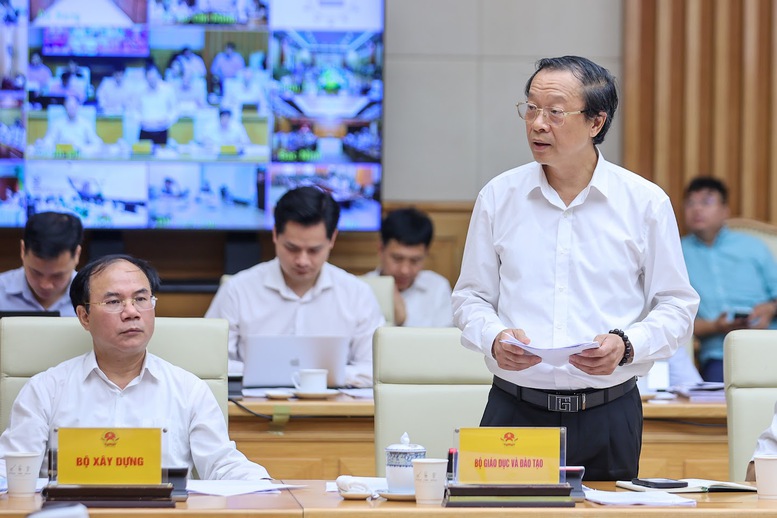
Deputy Minister of Education and Training Pham Ngoc Thuong delivered a report at the meeting
In addition, the development of the semiconductor sector still faces challenges, such as the extremely high capital requirements (averaging USD 10–20 billion per project) and the fact that specific preferential mechanisms and policies to support investment and encourage broad participation from organizations and individuals in this field have only recently been issued and will require time to demonstrate their effectiveness.
Infrastructure for research and development, training, incubation, as well as for production and business operations, remains limited. Human resources, especially high-quality personnel for the semiconductor industry, have not yet met the required standards.
Vietnam cannot stand on the sidelines, and the entire nation must act as one army
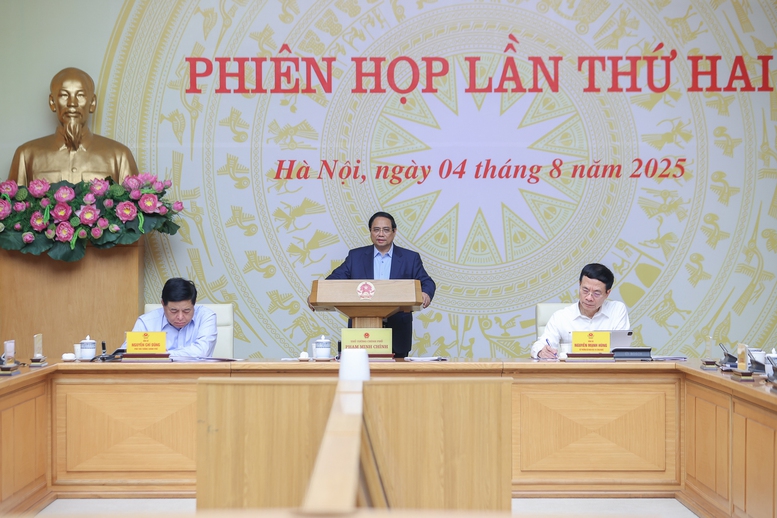
Prime Minister Pham Minh Chinh delivered the concluding remarks of the meeting
In his concluding remarks, Prime Minister Pham Minh Chinh highly appreciated the reports and opinions presented, and assigned the Government Office to take the lead, in coordination with the Ministry of Science and Technology and the Ministry of Finance, to fully incorporate the feedback and promptly finalize and issue the meeting’s concluding notice. This is to ensure unified implementation with clear assignment of persons, tasks, timelines, responsibilities, deliverables, and authority.
Emphasizing the role of the semiconductor industry, the Prime Minister affirmed that this is a key sector and a critical link in the Fourth Industrial Revolution, particularly in the development of artificial intelligence. It is a rapidly growing field, with an intense global race to master this technology, and Vietnam cannot remain on the sidelines if it seeks to build an independent, self-reliant economy while proactively and effectively engaging in deep, substantive international integration.
The Prime Minister summarized eight key highlights in the development of the semiconductor sector in recent times: awareness has been enhanced; mindsets have been renewed; actions have become more decisive; institutions have been improved; positive results have been achieved, especially in human resource training and infrastructure development; cooperation has been expanded; major partners and enterprises have shown interest; and research institutes, universities, and localities have actively engaged.
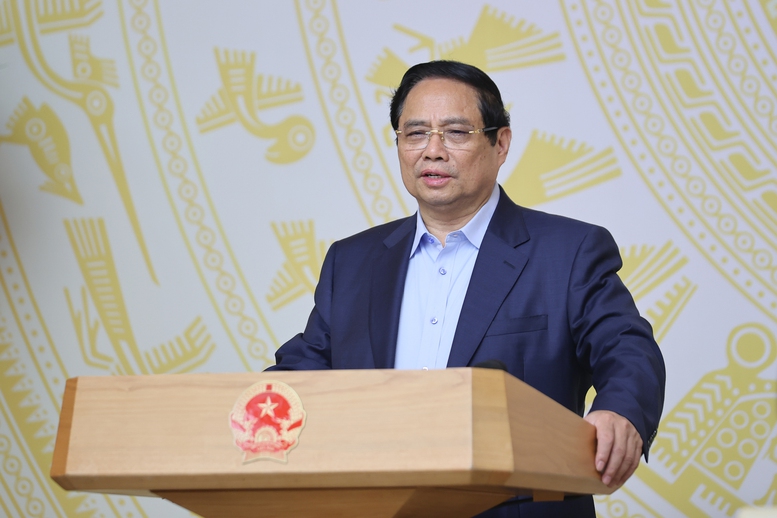
The Prime Minister acknowledged, commended, and highly appreciated the engagement and efforts of ministries, sectors, localities, educational institutions, and enterprises in developing Vietnam’s semiconductor industry.
On behalf of the Government and the Steering Committee, the Prime Minister acknowledged, commended, and highly appreciated the engagement and efforts of ministries, sectors, localities, educational institutions, and enterprises in developing Vietnam’s semiconductor industry, contributing to creating new growth momentum for the economy and breakthroughs in science, technology, innovation, and national digital transformation.
Alongside the achievements, the Prime Minister highlighted limitations and shortcomings that need to be jointly addressed: mobilizing resources, especially capital, remains difficult; institutional obstacles persist; task progress is still slow; breakthroughs are not yet strong; the ‘three-party’ cooperation model remains loose; and technology transfer is still limited.
Regarding the development direction in the coming period, the Prime Minister emphasized the goal that, by no later than 2027, Vietnam must be able to design, manufacture, and test certain essential semiconductor chips.
He outlined nine key groups of tasks and solutions, which are also important guiding principles, affirming that we must progress from lower to higher levels, from small to large, from simple to complex, yet accelerate, make breakthroughs, and leapfrog to catch up, advance together, and surpass.
Second, all ministries, sectors, localities, agencies, and enterprises, based on their functions, tasks, and authority, must closely follow and implement the Party’s, National Assembly’s, Government’s, and Prime Minister’s resolutions, strategies, decisions, and directives on developing the semiconductor industry and training semiconductor human resources.
“To develop the semiconductor industry, the entire nation must act as one army; advancing toward the goal must be rapid and bold; in battle, we must strike hard, strike fast, and secure certain victory; and results must be sustainable and long-lasting,” the Prime Minister highlighted.
Fourth, develop a comprehensive, synchronized, substantive, and effective semiconductor ecosystem.
Fifth, improve mechanisms and policies, particularly preferential mechanisms and policies, while removing bottlenecks in infrastructure, institutions, and human resources, with the spirit of streamlined institutions, seamless infrastructure, and smart people and implementation.
Sixth, shift the focus of preferential policies from attracting investment to promoting technology transfer.
Seventh, ensure close and effective coordination between the State, enterprises, and academia, integrating development facilitation, research, and production.
Eighth, ensure equitable development between the public and private sectors, and further expand public–private partnerships and international cooperation.
Ninth, develop a competitive, fair, and healthy semiconductor chip market in line with market principles.
Supplement the legal framework on the list of strategic minerals
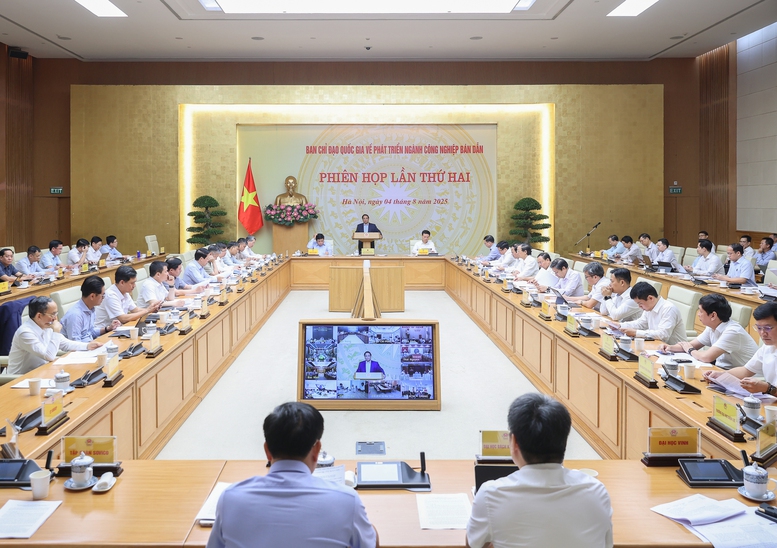
The Prime Minister emphasized the goal of being able to design, manufacture, and test certain essential semiconductor chips by no later than 2027
Regarding specific tasks, the Prime Minister stated that the Steering Committee must closely follow its responsibilities, strengthen supervision, inspection, and urging, and consolidate the Committee to ensure suitability and effectiveness.
The Ministry of Finance is to review and urge ministries, sectors, and agencies to promptly implement the tasks and solutions set out under the Human Resources Development Program for Vietnam’s Semiconductor Industry through 2030, with orientations to 2050.
Efforts should continue to focus on actively attracting foreign investment into the semiconductor sector, giving priority to projects featuring advanced, new, high, and clean technologies, modern governance, high added value, strong spillover effects, and connectivity to global production and supply chains.
In 2025, the Prime Minister will be submitted a Decision on credit policies for students, master’s candidates, and PhD researchers studying science, technology, engineering, and mathematics fields.
The Ministry of Science and Technology is to review and urge ministries, sectors, and agencies to promptly implement the tasks and solutions to ensure alignment with the objectives of the Strategy for the Development of Vietnam’s Semiconductor Industry through 2030 with a vision to 2050.
The Ministry of Foreign Affairs shall strengthen bilateral and multilateral cooperation in semiconductors; mobilize international resources to support development and human resource training for the semiconductor sector; actively promote communication to project Vietnam as a destination for the semiconductor industry; and direct Vietnamese overseas missions to foster international semiconductor cooperation and update the list of overseas Vietnamese experts and talents in the field.
The Ministry of Education and Training shall closely implement tasks related to training organization under the Human Resources Development Program for Vietnam’s Semiconductor Industry through 2030, with orientations to 2050, including directing the enhancement of the tripartite training model connecting the state, academia, and enterprises to ensure effective and high-quality human resource development for the semiconductor industry.
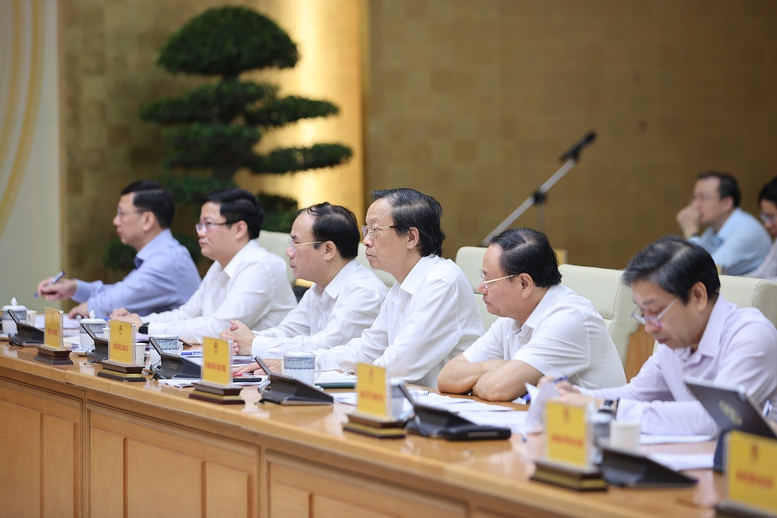
Delegates attending the meeting
The Ministry of Industry and Trade shall promptly propose amendments to regulations on direct electricity trading to make them more favorable, open, and competitive; ensure sufficient electricity supply oriented toward clean energy; take the lead, in coordination with the Ministry of Foreign Affairs, to urge the United States to remove Vietnam from the strategic export control list; and urgently submit to the Prime Minister for consideration and issuance the Strategy for the Development of Vietnam’s Logistics Services for the 2025–2035 period, with a vision to 2050.
The Ministry of Construction shall implement solutions to ensure transportation infrastructure to facilitate delivery, shipping, and logistics services for semiconductor manufacturing enterprises; and study and issue a plan to promote the application of semiconductor chip technology in transport infrastructure, smart transportation, and smart urban systems.
The Ministry of Agriculture and Environment shall study and propose the supplementation of the legal framework on the list of strategic minerals serving the development of the semiconductor industry; focus on promoting the survey and assessment of strategic minerals to ensure proactive sourcing of input materials, reduce external dependence, and foster the localization of the semiconductor supply chain; enhance scientific research and international cooperation to acquire processing technology for this material sector; and study and propose special licensing mechanisms for the extraction and deep processing of mineral deposits serving the semiconductor industry.
The Ministry of Justice shall continue, together with relevant agencies, to review and improve the legal framework, mechanisms, and policies to ensure the fast and sustainable development of the semiconductor industry.


